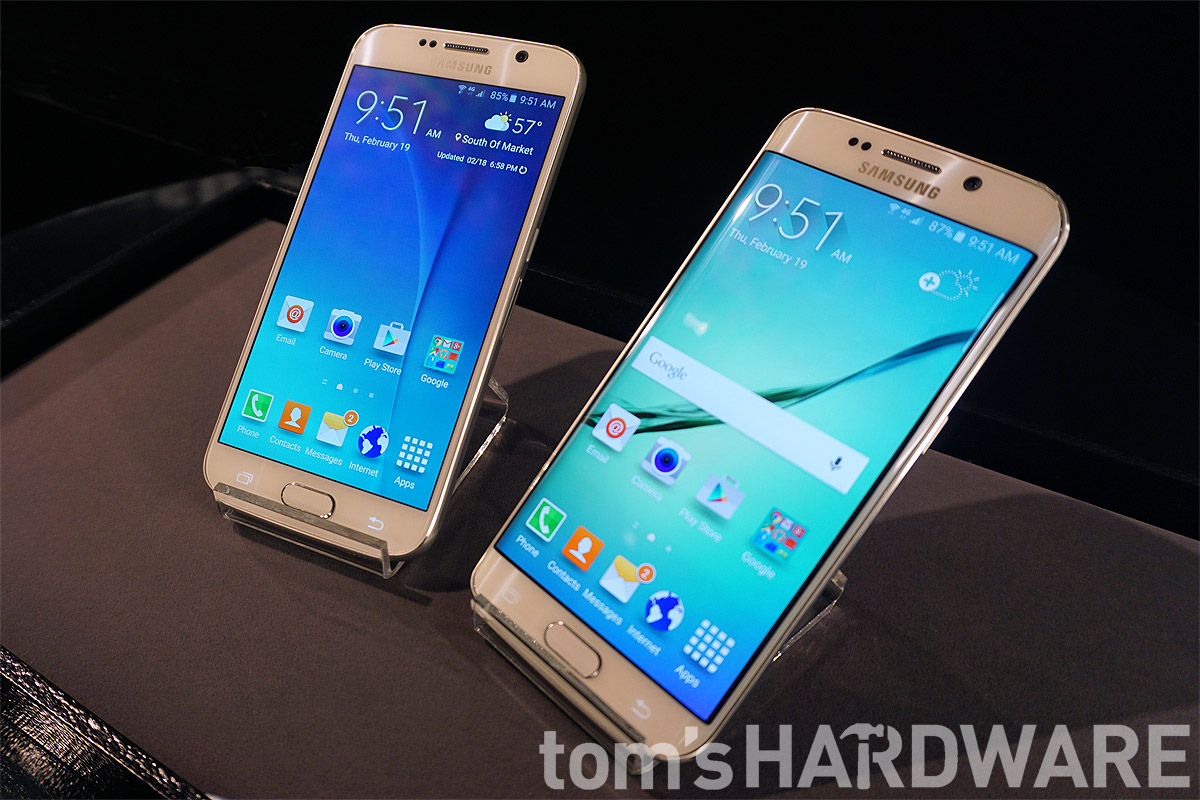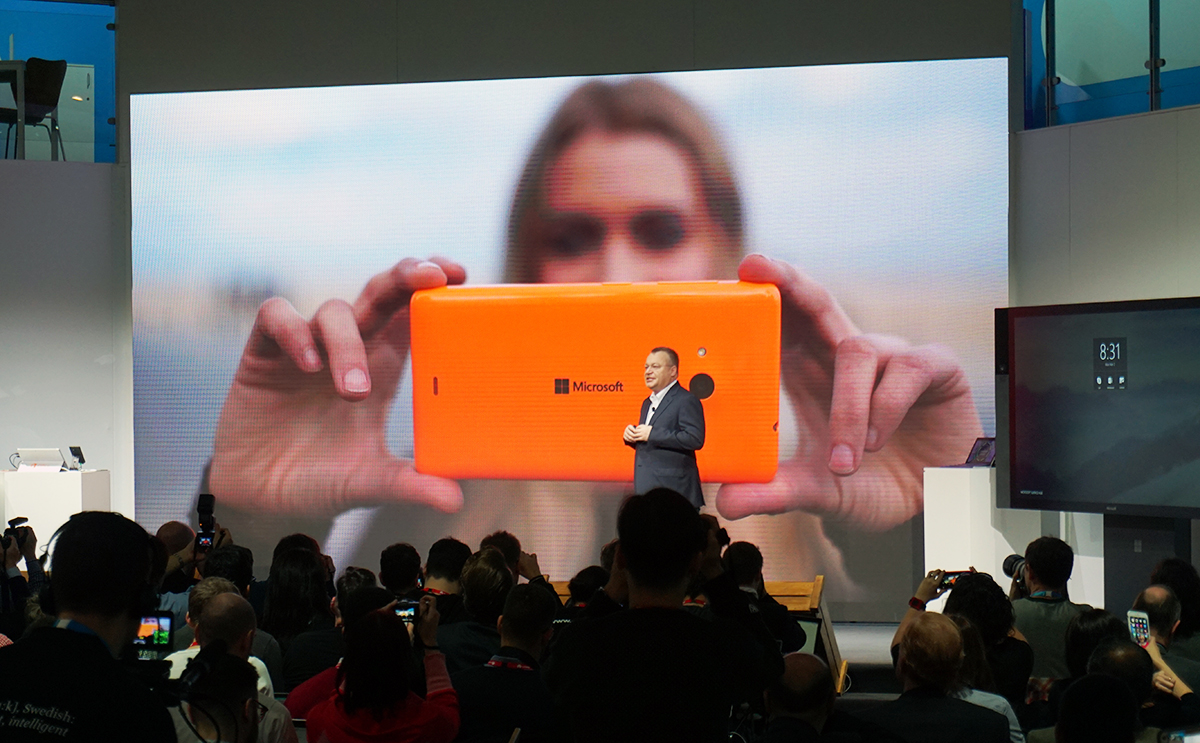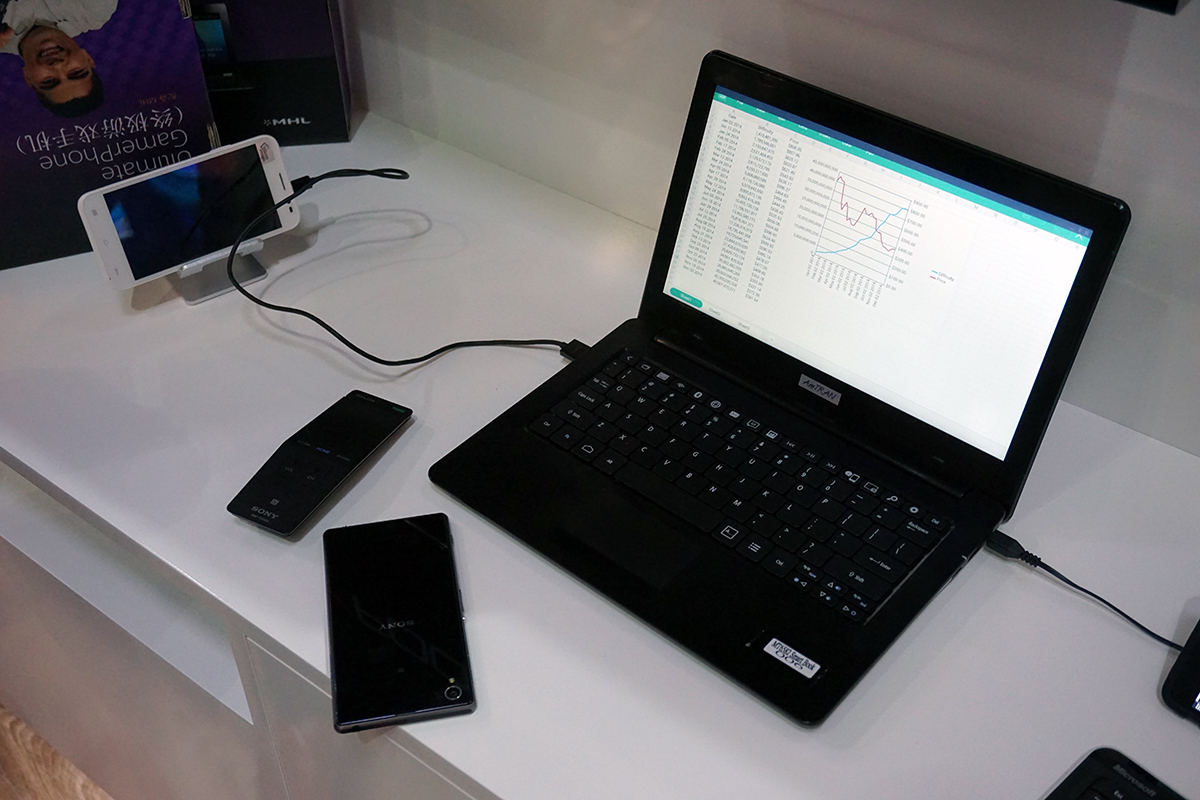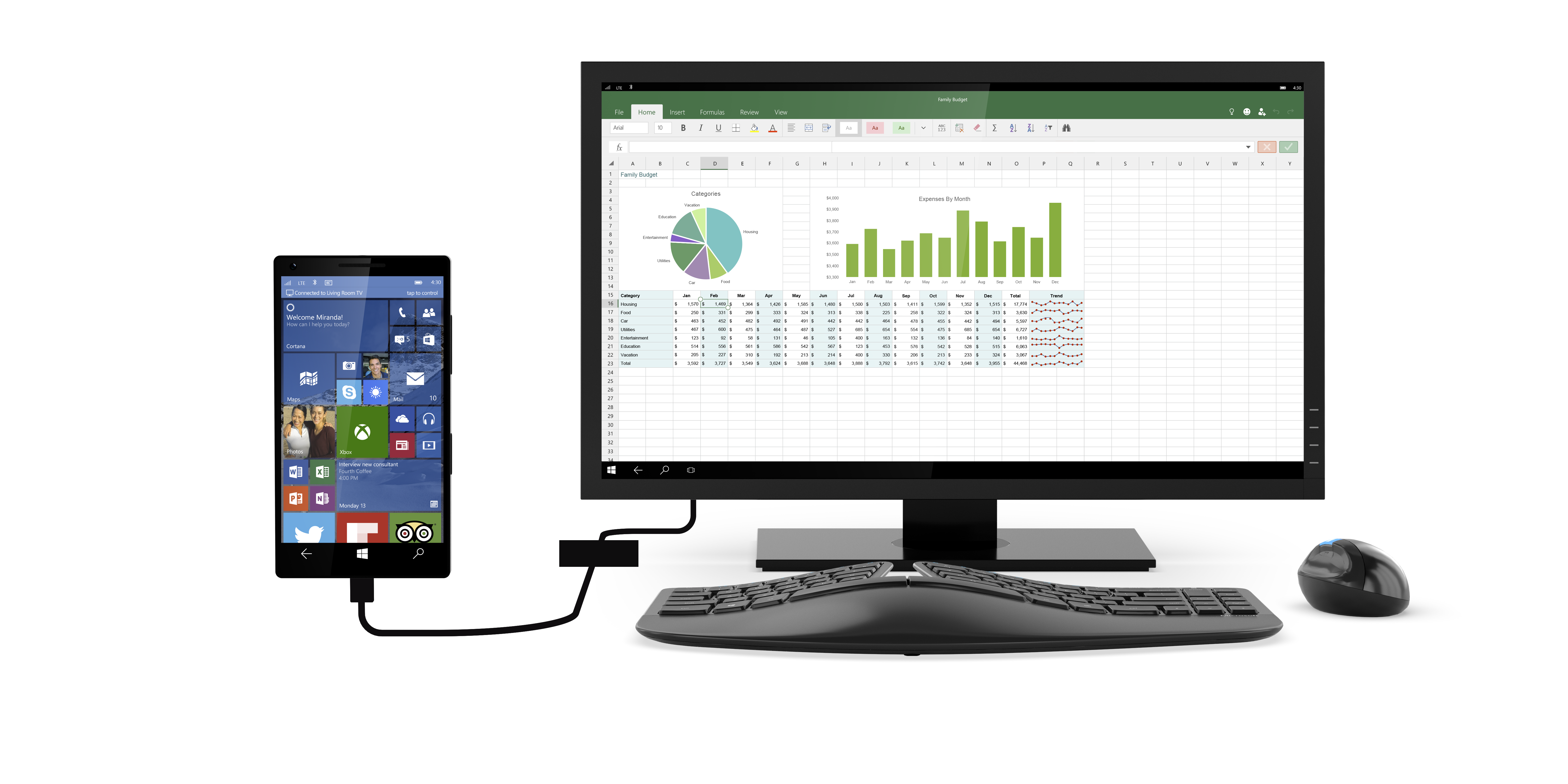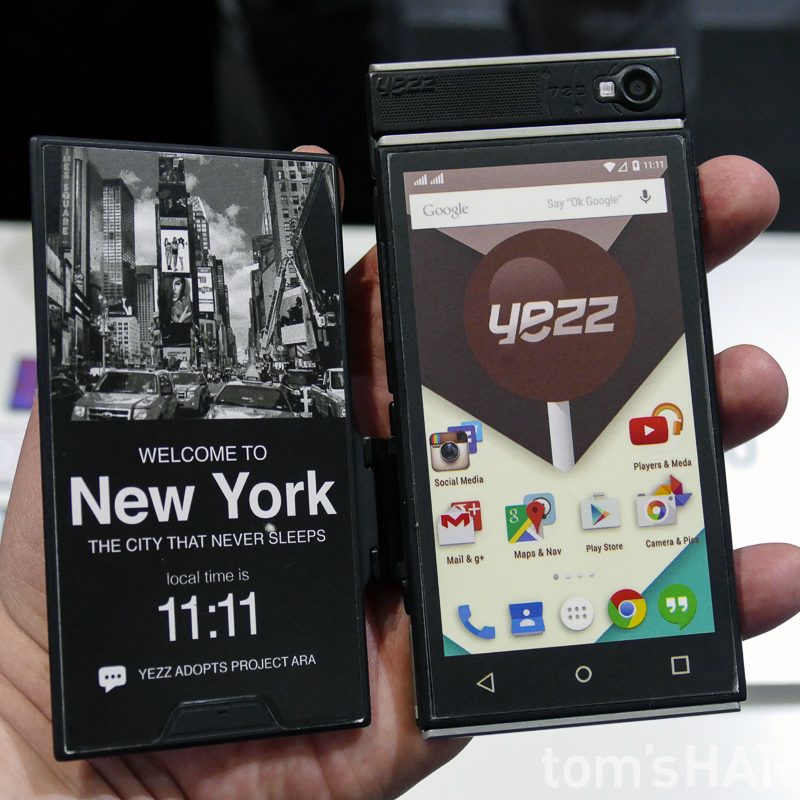The Looming Smartphone Paradigm Split
As the smartphone market continues to grow, it's also evolving and maturing, and there's a coming split in the market between high-end flagship devices and a smattering of lower-end smartphones. Ultimately, it will be a good thing, but the split will result in two different paradigms of smartphone use. In one, the smartphone will become the center of users' computing lives. In the other, the smartphone will remain crucial but ultimately peripheral, much as they've been for the vast majority of users for years.
The technology that could allow your smartphone to effectively replace your laptop is emerging, in terms of raw smartphone horsepower, new connectivity capabilities, and software solutions. That's all very exciting, but it will require the most expensive handsets available, and not everyone will be interested in paying so much money for a handset no matter what it's capable of.
Those users will want something different -- something with enough power and features that doesn't cost as much as a laptop or PC.
Market Forces
Until recently, the market for smartphone buyers has been fairly straightforward. Companies such as Samsung, Apple, HTC and LG launch increasingly powerful flagship handsets. (They, and others, have also been pushing out a steady stream of lower-end and midrange devices to round out a stack of handset offerings at various price points.)
Typically, it goes something like this: You can either pay for the latest and greatest phone, or you can pay a little less for something with a little less. As the next generation of hardware becomes available on new flagships, last year's tech bumps down a price tier. (Repeat, repeat, repeat.)
Time was, you got a free, subsidized phone when you signed up for a two-year contract with a mobile carrier. Then, it became common for flagship handsets to cost around $200 with a subsidized service plan. Another option is to just buy a hot new phone outright for $600, $700 or $800 or so.
More recently, carriers have trotted out plans that essentially allow (force?) you to lease your phone. You pay a monthly fee for the hardware on top of your monthly service plan, with the caveat being that you can upgrade your phone more frequently.
Get Tom's Hardware's best news and in-depth reviews, straight to your inbox.
If you hate the idea of leasing your phone (you end up paying full price for the thing over the course of your two-year contract), in some cases your only recourse is to pay full retail price for your smartphone up front.
I recently bumped into this very issue. For reasons I still don't quite understand, the hardware upgrade option on my pricey smartphone plan doesn't offer any subsidy at all anymore. I have to pay full price for any handset one way or another, either by paying for it in full up front or leasing it with a new two-year commitment.
Personally, I'm unwilling to lease my phone. (If leasing doesn't bother you, that's great.) I've further come to the conclusion that I'm unwilling to pay for a true flagship.
It's All How You Use It
Granted that I'm a bit of a cheapskate; I can't stomach paying as much for my phone as I would for a solid laptop.
And that's because I just don't need a flagship smartphone.
Everyone uses their tech differently, and for me (and many others), all I need from a smartphone is the ability to make calls and send texts; email, calendar and the like; engage with social media; use maps/GPS; and take the occasional snapshot or video. You don't need an $800 device for that.
Fortunately, for consumers who can't (or don't want to) afford an expensive flagship device, the options at the midrange, and even the lower-end, are fairly compelling. Motorola's E and G devices, for example, offer solid specs at $120 and $180, respectively, and Microsoft's upcoming Lumia 640 (approximately $150-$180) and 640 XL (approximately $212-$245) handsets also look to fit the bill, too.
There are some 'tweener options to consider that are not quite in the same class as "real" flagship smartphones, but they have strong specs and features with less sticker shock. The highest-end version of the Asus ZenFone 2, as well as Motorola's Moto X and the OnePlus One, all fall into this category, and they all cost around $300-$350.
If you want to break the bank for a flagship, even if you never come close to maximizing its full potential or using all of its features, so be it.
The Case For Flagships, And The Tech To Make It Happen
None of this is to say that flagship smartphones are overpriced toys. In fact, the impressive engineering we're seeing from smartphone OEMs across the industry point to the flagship handset as much more than just a smartphone -- it's becoming the center of users' computing lives.
Some of that is obvious. Our phones are always with us and always connected, and thus they serve as a primary communication tool and our most convenient means of accessing anything on the Internet. Add the fact that there's an ocean of apps available -- Apple's "There's an app for that" slogan has proven quite true -- and you have a device that can do just about everything, with a few caveats.
Screen size is obviously the biggest issue, and related to that is the awkwardness you run into any time you try to display your smartphone's UI on a big screen. And of course, for as powerful as smartphones have become, they don't hold a candle to a decent laptop, let alone a well-spec'd desktop, but they can do a lot.
To fully evolve the smartphone to a central place in one's computing life, two things need to happen. First, the smartphones themselves need to be able to offer reasonable performance and pump out high display resolutions. (On that point, the former is arguably a point of contention, but the latter is not.) Second, you need a way to connect your smartphone to a display and input devices.
The technology to make that connectivity happen already exists to an extent, but they are puzzle pieces that need to be put together in a cohesive picture.
There are straightforward solutions such as SlimPort, which offers microUSB-to-HDMI (or other display types) adapters that let you connect your smartphone to ostensibly any display. SlimPort suffers in part because of somewhat limited handset support, and you'll probably want to connect an external power source lest that big display slurps down the poor thing's battery.
The MHL Consortium offers similar solutions, but we saw some more sophisticated ideas from the group back at Mobile World Congress, including a take on more elegantly displaying the smartphone's UI on a monitor, using a smartphone to power a "dumb" clamshell, and more. What makes the MHL Consortium's solutions click is its technology that allows the phone and monitor (or clamshell, etc.) to negotiate power delivery -- in other words, the monitor can actually charge the phone while the phone is displaying its contents on the monitor.
This particular solution happens, physically, through a USB Type-C connector -- which is not yet available on any mobile device to speak of. (This is the part where we call out every smartphone OEM: Guys, please start building smartphones with a USB Type-C port instead of microUSB.)
At its recent Build conference, Microsoft announced Continuum, a technology coming in Windows 10 that can potentially solve the enormous hurdle of figuring out an elegant means of presenting a smartphone's UI on a big monitor.
Simply put, Continuum is a technology that intelligently and dynamically scales and frames Windows 10 depending on what devices are connected. For example, you can connect your Windows 10-based phone to a monitor with an accessory such as those described above, and the tech will optimize the output to display best on the monitor.
This works because Windows 10, fundamentally, will be the same across all manner of devices. In one fell swoop, Microsoft may have solved the problem of phone-to-monitor UI as well as the physical issues inherent in running a mobile OS on an external display.
At least, it should. Continuum and Windows 10 are coming later this year, so we haven't been able to test this out for ourselves yet.
Let's say, as a thought exercise, that all of the above technologies (and likely a couple of others) have coalesced, and suddenly you can easily connect or dock your smartphone to displays and input devices without thinking twice about it, and the UI transition is perfectly smooth and natural. Your smartphone, then, could perform double duty as your laptop.
In this paradigm, what smartphone do you want? You want the most powerful flagship you can find. And if by using that smartphone in this way, you obviate the need for a laptop, you can more likely afford to buy an extremely high-end handset. (It's also possible that, depending on what sort of user you are and what needs you have, you might not need any computing device at all other than that smartphone.)
If instead you prefer a true laptop, you may be perfectly happy to complement it with a more midrange smartphone.
The Modular Twist
Amid this discussion of high-end versus lower-end, and what they offer consumers, is another alternative altogether: a modular smartphone. Project Ara is a Google ATAP initiative that seeks to bring a modular smartphone to the market.
The idea is that instead of buying a locked-down, complete system (which is what all smartphones are at present), a modular device would allow users to customize their phones based on their preferences and needs. Need a more powerful GPU for mobile gaming? Pop in a discrete GPU module. Want loads of storage? Slap in a 200 GB eMMC module. Are you a journalist? Maybe you go for a high-end camera module and a nice microphone module. And so on. It's the same paradigm as building your own PC.
In the case of Project Ara, the concept of "high end" and "low end" is flipped on its head. The "Endo," or the skeleton of the modular phone, won't cost much--$50 or so, with very basic functionality -- and you can likely spend as little (another $50?) or as much (hundreds or even thousands of dollars) as you want to customize that phone with the modules you prefer.
It still, however, follows that split we're talking about here: high-end devices can be computing hubs for people, or they can be something else -- most likely, a personal communications device with access to the Internet and a nice little camera.
If anything, it reaffirms the notion that a split is coming. Which is not a bad thing.
What the coming split means is that the smartphone market can break wide open, and OEMs can sell a greater variety of handsets at a greater variety of price points. They'll be able to more aggressively market flagships as something more important than a luxury device, and at the same time they'll be able to offer more affordable handsets to a growing base of users who aren't interested in paying top dollar but still need a smartphone with strong functionality.
Seth Colaner is the News Director at Tom's Hardware. Follow him on Twitter @SethColaner. Follow us @tomshardware, on Facebook and on Google+.
Seth Colaner previously served as News Director at Tom's Hardware. He covered technology news, focusing on keyboards, virtual reality, and wearables.
-
CaptainTom For the love of god just let me run full windows or x86 linux so I can play Half Life 2 on my phone.Reply -
ldergv All I want is Slimport on all phones (I don't want to buy a special MHL TV) and two ports (micro USB to charge and mini or type C to take external input. At present connection, with a source of movies etc such as a portable hard drive, to show on TV with one micro USB port is a wiring nightmare. With falling prices on everything but smart phones $200 to $300 should be the max price for a so called flagship. Most users would take a bit more bulk for a bigger battery too and want the micro SD slot as we don't want Google or Apple to commercialize our storage on line and also pay cellular charges to use it when away from home. Finally make Android compatible with ExFAT and or NTFS.Reply -
bdl211 ReplyAll I want is Slimport on all phones (I don't want to buy a special MHL TV) and two ports (micro USB to charge and mini or type C to take external input. Finally make Android compatible with ExFAT and or NTFS.
Doesn't type C usb take care of both the connection and charging? Thought I read somewhere some of the new laptops have only a type C port that takes care of both charging and connection duties. If this is the case, having them built into the phone rather than the micro USB would seem to be the perfect one port solution.
Totally agree on the file formats. Would be nice to be able to have better data inter-operational between smartphone and PC.
I'd like to add my own smartphone gripe, I really wish smartphones could be wiped and have alternative operating systems installed a bit easier. Now that Android is a bit more mature, why can't I just wipe a phone, say, a 2 or 3 year old flagship phone, and then install the newest version of Android on it with all the needed drivers built into the install package like they are in Windows for PCs and laptops? It is currently a huge PIA to update a ROM on a smartphone compared to a PC and having to have a custom ROM built in advance for any given phone seems like a waste of time and resources. Instead of Cyanogenmod having a build for all their supported phones, why can't there be one build with all the needed code built in to run an install script that would install all the needed drivers and software from one package for any given phone that has the horsepower to run the newer version?
-
codyleemanofaction Why is it so hard to understand why the mobile industry (carriers) moved to a leasing option? The prices on plans were inflated to cover the loss on the phones when they subsidized them. Now the plans don't have the invisible 200-400 increase over the course of two years, it's your option whether you pay extra monthly.Reply -
ldergv Reply15932051 said:Quite simply, you are not a power user if your phone can replace your PC.
-
Urzu1000 I recently bought a Asus Zenfone 2 for $299 unlocked, and it smashes the $800 phones I saw my carrier selling when I went to get my old SIM card swapped out.Reply
They also seemed dumbfounded with the dual-sim slot when they were swapping it, which was a bonus.
I'm not certain why people pay so much for phones, which I'm assuming puts me in the second category here. The phone I have can run everything I throw at it with flying colors. Completely smooth, and never a stutter. Who would pay more for less? -
ldergv My phone can never replace my PC. On my PCs I have terabytes of storage and I edit pictures and video, which is useless on a phone. A phone simply allows simple tasks to be done away from a desk but few people are so called power users. Flagship phones are mainly status symbols or expensive toys to play games and profit machines for their makers. Point of diminishing returns long since passed.Reply -
zodiacfml flagships are indeed pricey except the S6 if I would be biased as it has a very good display and SoC.Reply -
scolaner ReplyDoesn't type C usb take care of both the connection and charging? Thought I read somewhere some of the new laptops have only a type C port that takes care of both charging and connection duties.
Yes, it can. That's the crux of my point on that issue.
And you're thinking of the new MacBook. It has just that one Type-C port, to handle charging and data.
